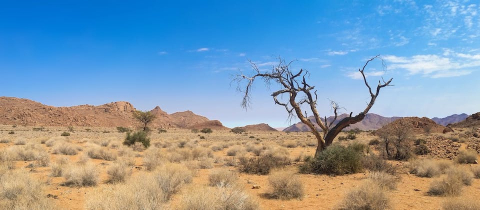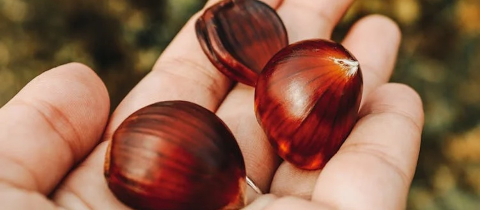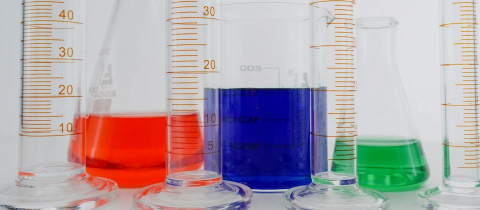Unless you’re familiar with Moroccan traditions, or are in the habit of frequenting trendy hair salons, chances are that argan oil has escaped your attention. Argan is a tree that grows in only one specific region of Morocco and produces a fruit that resembles a large olive. Stripping away the fleshy outside layer exposes a nut that can be dried and cracked open to reveal several kernels. Traditionally these have been roasted, mashed and squeezed to yield an oil with a nutty flavor. The residue is rich in protein and is used as animal feed.
Because the trees are rare, and a lot of work is involved in producing the oil, it tends to be expensive. That’s why it is used sparingly, usually to flavor salads and dips. It can also be stirred into couscous. There are even health claims about lowering cholesterol and boosting the immune system, although these have to be taken with a very large grain of salt.
Chemically argan oil is very similar to olive oil, consisting mostly of oleic acid, a monounsaturated fat, and linoleic acid, a polyunsaturated fat. While these are deemed to be “healthy,” argan oil would rarely be consumed regularly in significant amounts to have any impact on health. Like olive oil, it also contains some vitamin E, along with small quantities of polyphenols such as caffeic acid, oleuropein, catechol and resorcinol. While these have antioxidant properties, their amounts are of no practical relevance. There is somewhat more rationale for the use of argan oil in cosmetic products. At least one study suggests that a small amount rubbed on the skin can reduce sebum production and there is some hope that it may have an effect on psoriasis. But even here it is doubtful it would differ from olive oil. Nevertheless celebrities such as Catherine Zeta Jones and Charlize Theron tout the wonders of argan oil, claiming it keeps the skin youthful and makes for an ideal hair conditioner.
The esoteric nature of argan oil makes for effective marketing especially in the personal care product industry where companies search for novel ways to distinguish their products from those of others. Dove soap, or “beauty bar,” as its producer calls it, now features “Moroccan Argan Oil.” It is claimed to cleanse and nourish the skin. No doubt the soap cleanses, but “nourish the skin” is a meaningless claim. In any case, the argan oil can’t contribute much to this product since on the list of ingredients it appears in the fourteenth place, just above “fragrance.”
Some hair dressers recommend argan oil as a conditioning agent, often citing that it is the reason why Moroccan women have beautiful hair. Actually there’s no evidence that Moroccan women have particularly beautiful hair, or that significant numbers of them use argan oil. In any case, there’s no theoretical reason to think that argan oil would work better than olive oil as a hair conditioner. But there is also a product called “Moroccan oil” that is available in better hair salons and pharmacies that actually works very well in making hair more manageable and more likely to hold its shape.
While this product does contain some argan oil, it is hardly the active ingredient. Basically it is included to allow for some hype about a rare oil. The first three ingredients are actually cyclopentasiloxane, dimethicone and cyclomethicone, three very effective silicones that really can tame troublesome hair. But there are plenty of cheaper silicone products that do as good a job. However, they don’t come with the mythology that surrounds argan oil.
And part of the mythology is that traditionally the oil was pressed from nuts that had passed through the digestive tracts of goats that had climbed the tree to satisfy their craving for the argan fruit. There are pictures galore on the Internet of goats standing on the branches of argan trees. Given what we know about Photoshop, the pictures raise skepticism, but it turns out they are real. It seems that some Moroccan goats have learned to climb the argan tree in search of its olive-like fruit. Supposedly the nuts processed by the goats are easier to crack and yield a particularly flavourful oil. Actually, the oil is pressed from fruit that has been picked by human hands, making the tree-climbing goats a nuisance. Still, one can appreciate their remarkable athleticism. But collecting their poop to isolate the nuts is a myth. As much a myth as the one about argan oil having magical properties.







